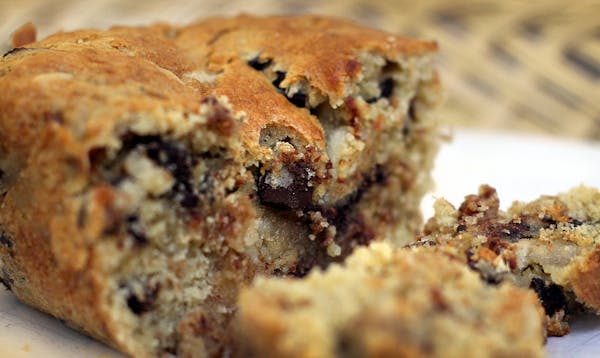Banana bread always falls into one of two categories: cakelike or bad. Cakelike banana bread is a sweet snack appealing enough to please even the fieriest banana-hater. But when bakers attempt to make banana bread healthy, by cutting back on sugar and butter, under the apparent delusion that mashed bananas are moist and sweet enough to stand in for both, problems arise. Sometimes wheat germ makes an appearance. Such efforts to lighten banana bread result in a loaf that is crumbly and dry, prone to sticking to the top and back of your mouth the way peanut butter does, only more chokingly.
To prevent such travesties, can we all please agree once and for all that, deep down in its moist, gooey heart, banana bread is cake? I encourage this categorization not because I think banana bread should be eaten only as dessert — by all means, eat it for breakfast or lunch or a midnight snack — but because the qualities of the ideal banana bread are coterminous with the qualities of cake. Both are sweet, buttery and lightly aromatic of vanilla. Both are moist and dense enough that plates and forks are in order; trying to eat a slice with your hands will end in tearful invocations of the five-second rule.
Simply adding mashed bananas to a basic cake batter goes a long way toward achieving the ideal banana bread. But you can go further. Adding marzipan to baked goods almost always makes them better. Never is this more the case than with banana bread: The almond paste melts into the mashed fruit to yield a gooier banana bread than you ever thought possible. (Marzipan gives you the added benefit of a lightly nutty flavor without any of the distracting crunch of actual nuts.) A smattering of dark chocolate chips, simpatico with both bananas and marzipan, completes the enhancement. The result of these sweet stir-ins is a banana bread that overwhelms the pleasure center of your brain like Girl Talk's thick mashups of catchy hooks.
For best results
It's always better to use overripe bananas when you're baking. They're not mandatory, but they're much more flavorful, moister and easier to mash than the green-skinned, youthful variety.
As for marzipan, it can be a bit unwieldy, thanks to its sticky, sugary texture, but there are two ways to manage this. You can freeze the marzipan to firm it up and then chop it with a sharp knife. (Chopping frozen marzipan requires some upper-body strength, but it results in fairly discrete morsels, unlike the mess you get when you try to chop room-temperature marzipan.) Or, and even better, you can leave your knife in the drawer, wash your hands, and pull room-temperature marzipan into jelly-bean-sized pieces with your fingers. They'll be tacky, but if you toss them with your dry ingredients before combining the batter, they won't clump together — and the marzipan will end up evenly distributed throughout the loaf.

Dining with altitude: Top-floor restaurants give new meaning to 'high roller' in Las Vegas

Legendary record store site in Minneapolis will soon house a new shop for musicheads



